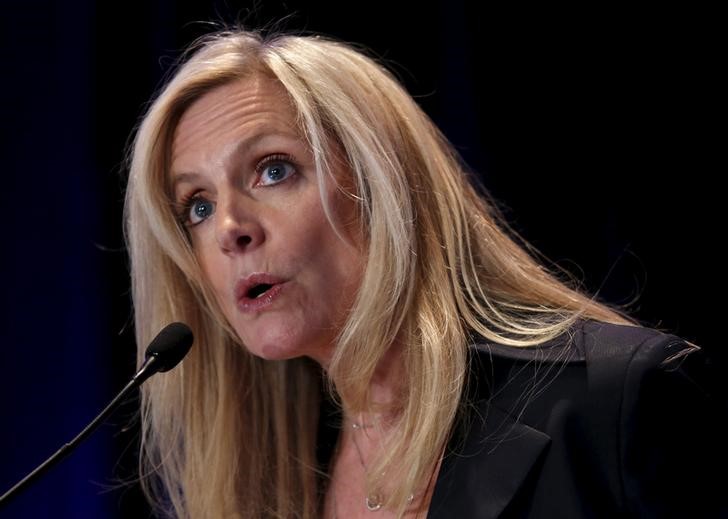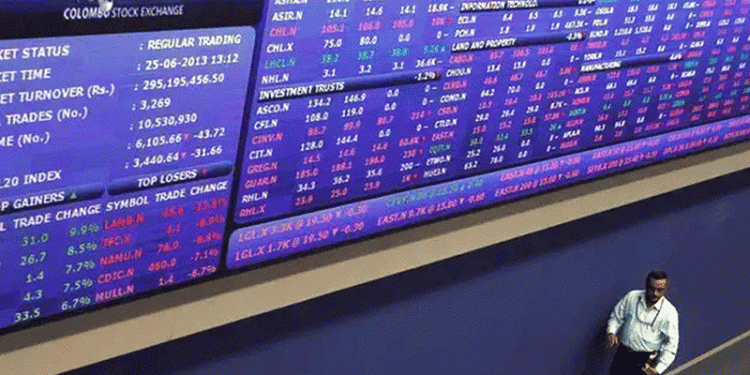 © Reuters. Brainard Backs Gradual Fed Hikes, Vows Vigilance as Risks Arise
© Reuters. Brainard Backs Gradual Fed Hikes, Vows Vigilance as Risks Arise(Bloomberg) — A strong fiscal boost to the U.S. economy at a time of low unemployment suggests a gradual pace of interest-rate increases remains “the appropriate path” to prevent growth from overheating, Federal Reserve Governor Lael Brainard said.
“Continued gradual increases in the federal funds rate are likely to be consistent with sustaining strong labor market conditions and inflation around target,” Brainard said Thursday in a speech to the Forecasters Club of New York. “This outlook suggests a policy path that moves gradually from modestly accommodative today to neutral — and, after some time, modestly beyond neutral.”
That last line is important because for central bankers, the neutral rate is the level that’s neither adding stimulus nor restraining the economy. Going past neutral means her outlook includes monetary policy that gets a little restrictive. Her remarks were also notable for how optimistic she remains in the face of market turmoil in Europe and a brewing trade war involving some of the world’s largest economies.
Brainard’s speech validates investor expectations that the central bank will raise the benchmark lending rate when officials next meet June 12-13, and her outlook appears similar to the policy path published by the Federal Open Market Committee in March. At that time, central bankers forecast the federal funds rate that keeps supply and demand in balance in the economy over the longer run at 2.9 percent. They forecast the rate would be 3.4 percent at the end of 2020.
“It seems likely that the neutral rate could rise in the medium term above its longer-run value,” said Brainard, who was appointed by President Barack Obama to the central bank’s Board of Governors. “I expect current tailwinds to boost the neutral rate gradually over the medium term but leave little imprint on the long-run neutral rate.”
Three Vs. Four
The FOMC’s latest forecasts published in March show an even split among policy makers between three and four hikes for 2018, excluding outliers. Bets in financial markets on four rather than three hikes have faded in recent days as financial markets have been roiled by everything from political uncertainty in Italy and Brazil to U.S. trade disputes, conditions Brainard generally described as downside risks worth watching.
“Political developments in Italy have reintroduced some risk, and financial conditions in the euro area have worsened somewhat in response,” Brainard said, noting that monetary policies in advanced economies are likely to diverge for some time. Trade policy uncertainty “clouds the horizon,” she said, and “an escalation in measures and countermeasures — although an outside risk — could prove disruptive at home and abroad.”
Brainard indicated that she’s putting less weight on a flatter yield curve as an indication of overly tight policy, partly because the term premium, or compensation investors demand for holding longer-term debt, on government bonds is lower than it was in the past.
“With the term premium today very low by historical standards, this may temper somewhat the conclusions that we can draw from a pattern that we have seen historically in periods with a higher term premium,” the Fed governor said.
Growth Outlook
Private forecasters surveyed by Bloomberg expect the economy to expand 2.8 percent this year, with inflation rising slightly above the Fed’s 2 percent target.
Economists including Sal Guatieri at BMO Capital Markets raised their second-quarter growth forecasts on Thursday after Commerce Department data showed consumer spending increased more than anticipated in April. The report also showed that inflation hit the Fed’s 2 percent target for the second straight month. Price gains have remained below target for most of the past six years.
“The sizable fiscal stimulus that is in train is likely to provide a tailwind to growth in the second half of the year and beyond,” Brainard said. “From a position of full employment, the economy will likely receive a substantial boost from $1.5 trillion in personal and corporate tax cuts and a $300 billion increase in federal spending, with estimates suggesting a boost to the growth rate of real GDP of about 3/4 percent this year and next.”
Brainard said it’s difficult to judge how much slack remains in the labor market. The Labor Department will release the May jobs report Friday. April’s unemployment rate of 3.9 percent was the lowest since December 2000. She noted, however, that the employment-to-population ratio for prime age workers remains about 1 percentage point below its pre-crisis level.
“While it is difficult to know with precision how much slack still remains, I am seeing more evidence that labor markets are tightening, and wages are accelerating, although at a measured pace,” she said.
Source: Investing.com



























